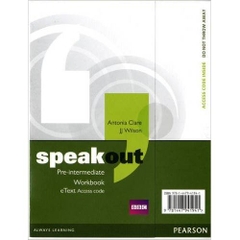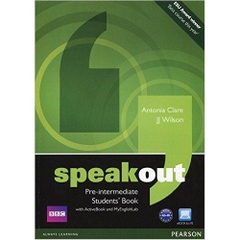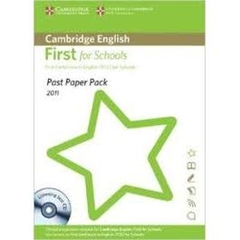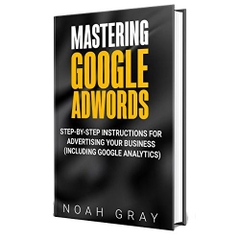-
-
-
Tổng tiền thanh toán:
-
-
Thông tin
-
Tìm sách theo yêu cầu
Book Description
Release date: April 1, 2001 | ISBN-10: 0806512717 | ISBN-13: 978-0806512716 | Edition: 1st Printing
Barry Farber has been a true adventurer in languages for forty-six years and can speak in 25 tongues. The techniques he presents here will have readers speaking, reading, and writing and enjoying any foreign language in a surprisingly short time.
- link: http://www.amazon.com/How-Learn-Any-Language-Inexpensively/dp/0806512717
Editorial Reviews
About the Author
Barry J. Farber is the president of Farber Training Systems, Inc. and The Diamond Group, and a noted author, speaker, television talk-show host and consultant in the areas of sales, management, and personal development. Among his many corporate clients are Allied Signal, AT&T, Chase Manhattan Bank, The Perrier Group, Merck, and Val-Pak. The author of Diamond in the Rough, Diamonds Under Pressure, and State of the Art Selling (available in both book and audiocassette format), Farber has been interviewed on CBS, NBC, and CNN and featured in leading business publications. He lives in New Jersey with his wife and three children.
Product Details
- Paperback: 192 pages
- Publisher: Citadel; 1st Printing edition (April 1, 2001)
- Language: English
- ISBN-10: 0806512717
- ISBN-13: 978-0806512716
- Product Dimensions: 8.2 x 5.4 x 0.6 inches
- Shipping Weight: 0.3 ounces (View shipping rates and policies)
- Average Customer Review: 4.1 out of 5 stars See all reviews (84 customer reviews)
- Amazon Best Sellers Rank: #772,553 in Books (See Top 100 in Books)
Most Helpful Customer Reviews
628 of 654 people found the following review helpful
4.0 out of 5 stars Here's what you'll get: November 27, 1999
Format:Paperback
Too many Amazon reader reviews do little more than gush ('LOVED it! ' 'It was GREAT! ') or grouse ('the author is truly ignorent' -- embarrasing how often 'ignorant' is misspelled). Not too helpful. I want to give you something you can use. If you're interested in 'How to Learn Any Language,' you'd probably like to know the rubber-meets-the-road stuff. How does the author address the 'How' of his title? Mr. Farber outlines a 'multiple track attack' that has you pursuing your target language on several fronts. Here are the tools he wants you to get: a basic grammar text, a dictionary, a phrase book (such as those for tourists), a magazine or paper or simple book written in the target language, language tapes, blank tapes, and flash cards, including homemade ones. First step: Study patiently and well the first five chapters of your grammar. Mark anything you don't quite get; take your question to a native speaker if you can. Second step: You're ready to bring on the other tools. Continue with the grammar text, but now pick up the newspaper (or magazine or book) and read the first paragraph. Highlight the words you don't know, look them up, and make flash cards. You'll review the cards when you're on hold, waiting in line, etc. (Read the English side of the card first and think your way into the target language before you flip it over to confirm your answer.) A couple of days later, perhaps, move to paragraph two. You should now begin cherry-picking your way through the little phrase book and listening to your tapes. (Tip: The highly interactive Pimsleur sets are pricey but excellent; do an Amazon title search for 'Pimsleur' and your target language.) The phrase book will supply you with things that the grammar book won't. Don't just memorize these basic phrases and expressions. Plot a conversation and practice your responses. The tapes, if they're good, allow you to hear and imitate native speakers. By now you should be on chapter seven or eight of the grammar. And you should be looking for people to speak with. One chapter deals with clever mnemonic devices for memorizing new words. Example: I've remembered that 'kar lo' means 'he is cold' in Hebrew by imagining my friend Carlo shivering. The more far-fetched, the better, probably. All this seems to make good sense. Why limit yourself to one approach when you can more nearly approximate the total immersion method by drawing on a wealth of resources at hand?
10 Comments | Was this review helpful to you?
81 of 81 people found the following review helpful
4.0 out of 5 stars Good Kick-Start for a Self-Study Foreign Language Program June 6, 2002
By Eds Word
Format:Paperback
An easy, enlivening, and at times goofy read, this book should be the first reading assignment for high-school foreign language teachers who seek to inspire budding polyglots as well as for those who are embarking on a self-study foreign language program. Farber's `multiple track attack' emphasizes hitting your brain from multiple sources but in a systematic way to build both retentiveness and comfort with the new language. This book is written at a basic level and can be read in one sitting so don't expect too much in terms of technical details - it is more about developing simple and useful learning techniques and Farber's personal insights on language learning.
Amazon has lots of reviews of Farber's book so here are some added personal findings. The book was published in 1991 and needs to be updated to incorporate the use of computers in his `multiple track attack.' Farber is very much on the money in his high praise of Pimsleur tapes but if you purchase a Pimsleur course, even one which covers reading, be sure to augment this with good reading/vocabulary materials (the Pimsleur tapes are not accompanied by printed transcripts). Pimsleur's strong point is in developing a speaking proficiency more so than in teaching you grammer or how to read. If you plan on writing in a foreign language which doesn't use the Roman alphabet (e.g. Arabic, Japanese) you'll need to augment Farber's recommended repertoire with a book containing writing instruction. Chinese and Korean characters, for example, are written with a certain stroke order that you'll want to emulate from the very beginning before bad penmanship habits become entrenched. An enjoyable feature of this book is Farber's spin on individual languages (for example which languages are easy to learn, which are difficult, and why you should really master French if you plan on studying multiple languages).
Definitely recommended for anyone who plans on starting a self-study foreign language program.
Amazon has lots of reviews of Farber's book so here are some added personal findings. The book was published in 1991 and needs to be updated to incorporate the use of computers in his `multiple track attack.' Farber is very much on the money in his high praise of Pimsleur tapes but if you purchase a Pimsleur course, even one which covers reading, be sure to augment this with good reading/vocabulary materials (the Pimsleur tapes are not accompanied by printed transcripts). Pimsleur's strong point is in developing a speaking proficiency more so than in teaching you grammer or how to read. If you plan on writing in a foreign language which doesn't use the Roman alphabet (e.g. Arabic, Japanese) you'll need to augment Farber's recommended repertoire with a book containing writing instruction. Chinese and Korean characters, for example, are written with a certain stroke order that you'll want to emulate from the very beginning before bad penmanship habits become entrenched. An enjoyable feature of this book is Farber's spin on individual languages (for example which languages are easy to learn, which are difficult, and why you should really master French if you plan on studying multiple languages).
Definitely recommended for anyone who plans on starting a self-study foreign language program.
XEM CHI TIẾT TẠI AMAZON.COM
- Thông tin chi tiết
- Mục lục
- Đánh giá & bình luận của người mua
- Những cuốn sách cùng chủ đề hoặc có liên quan
Tại web chỉ có một phần nhỏ các đầu sách đang có nên nếu cần tìm sách gì các bạn có thể liên hệ trực tiếp với Thư viện qua Mail, Zalo, Fanpage nhé
Đăng ký nhận tin qua email
Hãy đăng ký ngay hôm nay để nhận được những tin tức cập nhật mới nhất về sản phẩm và các chương trình giảm giá, khuyến mại của chúng tôi.












